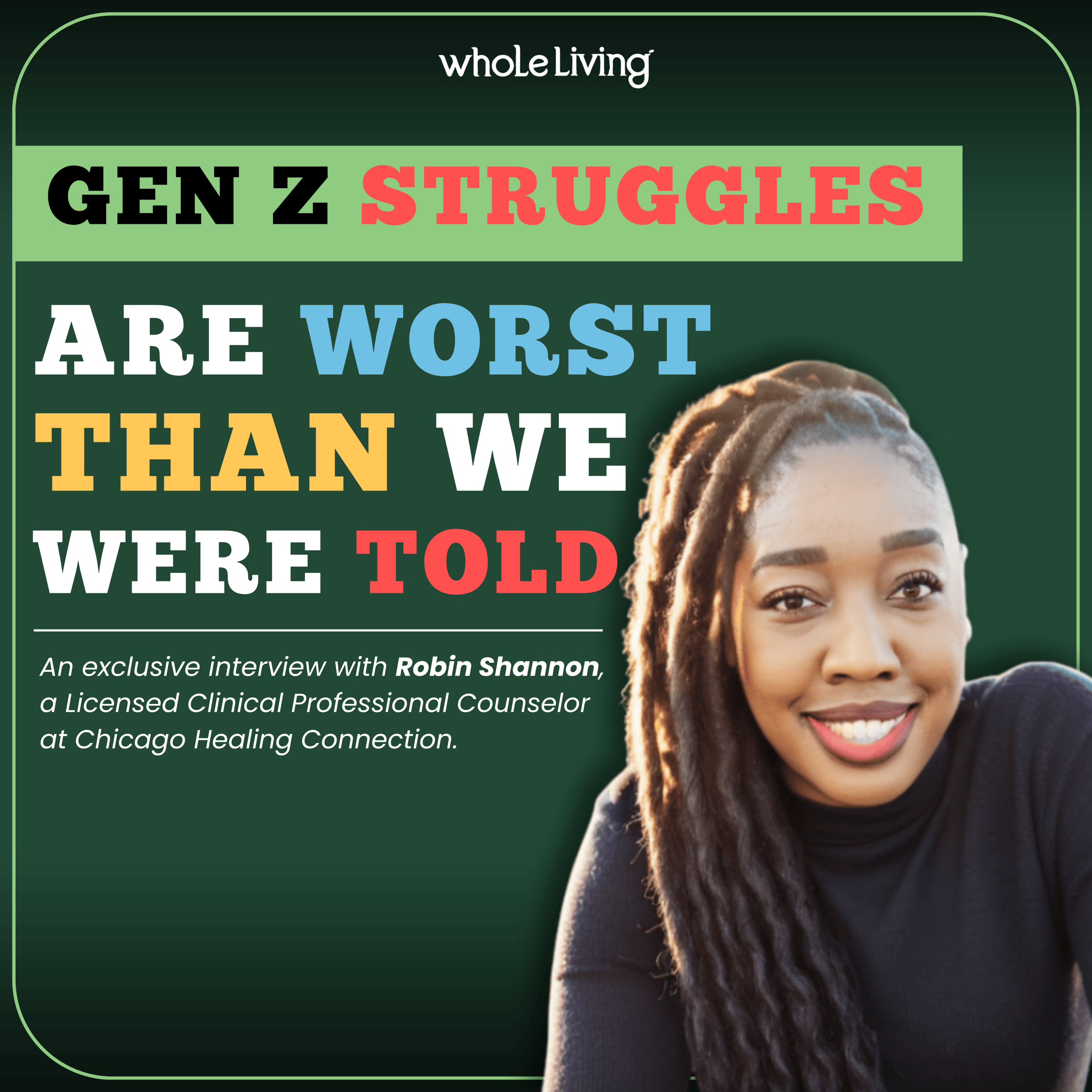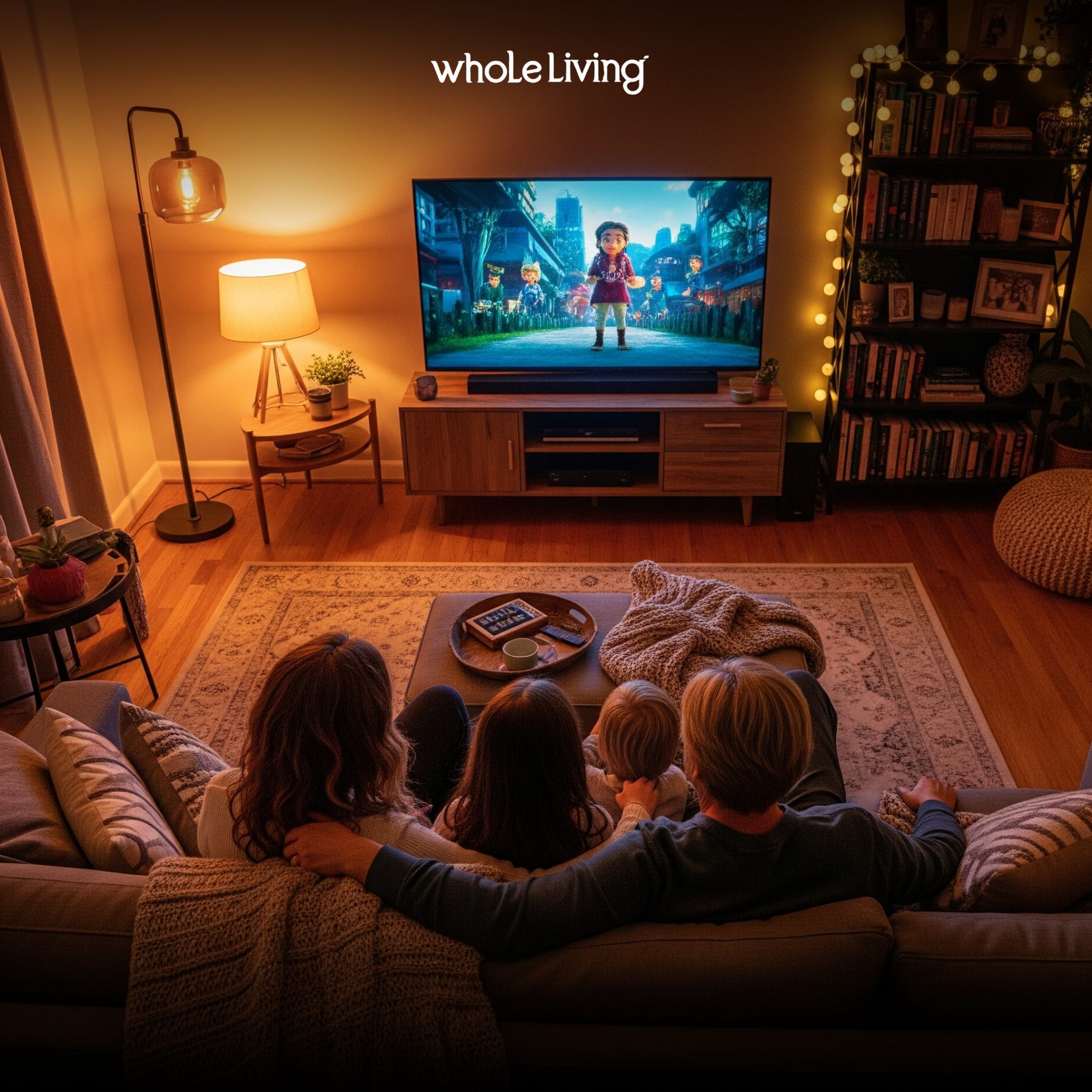In This Article
Blunted emotion can feel like you're living in black and white while the rest of the world moves in full color. You may notice a lack of emotional responses to things that once brought joy or even sadness. This isn’t about not caring; it’s about feeling disconnected from your own emotional experiences. For many people, this emotional blunting is tied to major depressive disorder or the effects of antidepressant medication. If you’ve found yourself quietly wondering why you no longer feel emotions the way you used to, know that there is nothing wrong with you—you’re simply in a season that requires deeper care.
When we experience emotional blunting, we may not notice it at first. It can be subtle, like a favorite song no longer stirring anything inside you, or watching a loved one cry and not being able to match their emotional state. Over time, this flat affect can stretch across your days, leaving you feeling emotionally numb. For more than one third of people with depression or those taking antidepressants, emotional blunting is a commonly reported and deeply personal experience. The good news is, even though emotional blunting feels heavy, it is possible to feel emotions again with the right support and healing approach.
What Is Emotional Blunting and Why Does It Happen?

Emotional blunting means a noticeable dulling of your emotional range. You may not feel the same spark of happiness or the sting of sadness you once did. This can show up as a flat affect or a muted facial expression, especially when you're expected to express emotion. Emotional blunting is not about being weak or dramatic. It's a real experience often linked with mental health conditions such as major depressive disorder and bipolar disorder.
One of the most common causes of emotional blunting in patients is taking antidepressants, especially selective serotonin reuptake inhibitors. These medications can help relieve depressive symptoms but may also reduce your ability to feel both positive and negative emotions. It's a delicate balance that many people with depressive disorder have to navigate. While medication can be a lifesaver, it may also contribute to emotional detachment, making it harder to connect with your inner world. If you feel emotionally numb or find that your emotions have faded, it's worth looking deeper into the potential causes.
Besides medication, other mental health disorders like post traumatic stress disorder can also lead to emotional blunting. Chronic stress, emotional trauma, and long-term suppression of feelings may play a role too. Your brain chemicals can shift as a response to these experiences, making it harder to process emotional reactions naturally. Understanding the underlying cause of your emotional state is the first step to healing. And no matter what brought you here, you are not alone in this.
The Subtle Signs You May Be Experiencing Emotional Blunting

Sometimes emotional blunting doesn’t shout; it whispers quietly into your daily life. You may feel emotionally numb during moments when you expect to feel something—like during a joyful celebration or a tearful goodbye. You might notice your facial expressions becoming more neutral, even when you try to smile or laugh. This kind of flat affect is a common symptom and is often mistaken for simply being tired or distracted. But over time, the lack of emotional expression can create distance between you and others, even between you and yourself. Here are some signs you may be experiencing emotional blunting:
- You feel emotionally numb in moments that used to move you.
- Your facial expressions are more neutral or flat, even when you try to show emotion.
- You struggle to connect emotionally with people, including those closest to you.
- You say or think things like, “I should feel something right now, but I don’t.”
- You feel like you're going through the motions instead of really living.
This kind of emotional detachment can be confusing, even unsettling. You may begin to wonder if this is just how life feels now. But this state is not permanent, and simply noticing these signs is a meaningful first step. You’re not alone in feeling this way, and nothing about this experience makes you weak or broken. Recognizing the signs is an act of self-awareness—and it’s the beginning of coming back to life.
People experiencing emotional blunting in patients often describe a general dullness toward both excitement and sadness. It’s not just the big emotional moments that feel far away, but even small emotional experiences like comfort, empathy, or peace. You may find yourself feeling emotionally detached from the world, unsure of how to reconnect. When emotional responses become rare or shallow, your dreams and desires can feel out of reach too. That’s why noticing and honoring these signs is such a vital part of protecting your emotional well being.
READ ALSO: Natural Remedies for Depression: A Gentle, Holistic Approach
How Antidepressants Can Play a Role

Antidepressant medication is one of the most helpful tools in managing depressive disorder. It can lift you out of the darkest places and help you return to a more stable emotional state. But for some, taking antidepressants also brings an unexpected shift: emotional blunting. The same medications that ease depressive symptoms can sometimes dull your emotional experiences. This doesn’t mean they’re bad—it means your treatment plan may need adjustment.
Selective serotonin reuptake inhibitors, or SSRIs, are known to impact how your brain chemicals work. While they can reduce negative symptoms like anxiety and deep sadness, they may also limit your ability to feel positive emotions. That balance can be tricky. Some depressed patients report that their emotional range becomes smaller while on medication. You might feel fewer lows—but also fewer highs, and that can feel like a loss.
During the acute phase of treatment, emotional blunting may be more noticeable. It can feel like a side effect rather than a solution. If you notice flat affect or a reduced facial expression while taking antidepressants, it's important to talk with a mental health professional. Together, you can explore adjustments that maintain your emotional well being while still treating your symptoms. Medication is meant to support your healing, not steal your ability to feel.
Mental Health Conditions Linked to Emotional Blunting

Emotional blunting isn’t limited to major depressive disorder. It can also appear in several other mental health conditions, each with its own emotional challenges. These conditions may affect how your brain processes and regulates emotions, often causing a reduced emotional expression or blunted affect. When your mind is focused on protecting you from pain, it can sometimes mute your ability to feel fully. Over time, this coping mechanism can leave you feeling emotionally numb or disconnected from yourself and others.
Here are some common mental health conditions where emotional blunting may occur:
- Major Depressive Disorder – Often leads to a flat emotional state, where both joy and sadness feel distant. Emotional blunting is a common symptom or can be caused by antidepressant medication.
- Bipolar Disorder – During depressive phases, or as a side effect of medication, individuals may feel emotionally detached or experience a flat affect.
- Post Traumatic Stress Disorder (PTSD) – Emotional blunting is often a part of the trauma response. The brain may shut down emotions to avoid re-experiencing pain.
- Affective Disorders – These include mood-related conditions where intense emotional highs and lows can lead to emotional blunting as a way to manage overwhelm.
- Other Mental Health Disorders – Conditions such as anxiety disorders or schizophrenia may also include blunted affect as a symptom or side effect of treatment.
Recognizing that emotional blunting may come from more than one source helps reduce shame. These aren’t signs of weakness—they’re signs your brain has been trying to protect you. Understanding where emotional detachment is coming from allows for more compassionate care. Whether it’s depression, trauma, or another diagnosis, you are not alone—and you deserve support that sees the whole you.
Diagnosing Emotional Blunting: How It's Assessed

Identifying emotional blunting often begins with how you describe your experiences. A mental health professional will look for signs like flat affect, decreased emotional responses, and lack of facial expression. You might be asked how often you feel emotions or whether you’ve noticed a drop in emotional reaction to everyday life. These small clues paint a picture of your emotional state. Every detail matters because your experience is unique.
Clinical characteristics can include reduced emotional expression, detachment from both joy and sadness, and a sense of disconnection from others. In some cases, emotional blunting is linked to certain medications, especially during the acute phase of treatment. If your emotional range feels muted and persistent, your provider may explore whether you're experiencing adverse emotional effects from your current antidepressant. Open and honest conversations help in creating the right treatment plan.
There are no blood tests for emotional blunting. It’s about patterns, behaviors, and how you feel over time. A diagnosis might also involve reviewing your mental health history, any affective disorders, and how you’re currently coping. This is why ongoing communication with your provider is so important. You're not just treating a condition—you're tending to your emotional well being, your story, and your ability to feel whole again.
READ ALSO: Holistic Anxiety Remedies For Calmness Without Pills
Steps to Overcome Emotional Blunting Gently and Intentionally

Healing from emotional blunting doesn’t happen all at once. It’s a slow, meaningful journey that begins with awareness and continues with small, compassionate steps. Whether your experience comes from antidepressant medication, depressive disorder, or other mental health conditions, it is valid—and it is something you can work through. If you're facing emotional detachment, blunted affect, or simply feel emotionally numb, you are not alone. And you are not stuck.
Here are gentle steps you can take to begin reconnecting with your emotional self:
- Acknowledge what you're feeling (or not feeling).Recognizing emotional blunting in yourself is a courageous first step. Naming it helps you understand that you're experiencing something real and common, not a personal failure.
- Accept that emotional blunting is not your fault. Whether caused by current antidepressant medication, mental health disorders, or chronic stress, this is not a weakness. It's a response your body and brain have used to cope.
- Seek support from a mental health professional. You don’t need to figure this out on your own. A therapist or psychiatrist can help you explore the emotional impact and create a safe treatment plan tailored to you.
- Explore the root cause of your emotional numbness. Understanding whether it’s linked to medication, trauma, or another mental health condition can guide the next steps. The more you understand, the more empowered you become.
- Stay patient with the process. Reconnecting with your emotional range doesn’t happen overnight. Even small moments of feeling—comfort, joy, sadness—are signs of healing.
Your emotional well being is worth protecting. You are capable of more than just getting through the day—you are meant to experience the richness of life. With these steps and steady support, feeling again becomes not just a hope, but a real possibility.
Personalized Treatment Plans

Every person’s experience with emotional blunting is unique. That’s why a personalized treatment plan created with a mental health professional is so important. They will listen to your story, look at your emotional responses, and help guide you based on your needs and background. Whether you are dealing with depressive disorder, bipolar disorder, or other mental health disorders, your care should be as individual as you are. This is your healing path, not a one-size-fits-all process.
Working closely with a mental health professional allows you to explore what may be causing your emotional blunting. It could be connected to the acute phase of treatment, certain medications, or long-standing emotional detachment. These conversations are not always easy, but they are necessary. A good provider will help you move toward more emotional well being without judgment or pressure. You’re allowed to ask questions, express doubts, and take your time.
Your provider may suggest lifestyle changes, therapy, or changes to your medication. Together, you’ll form a treatment plan that not only addresses the symptoms but also supports your desire to feel more alive. You don’t have to figure this out alone. With someone knowledgeable walking beside you, the path becomes clearer and far less overwhelming.
Talk Therapy and Alternative Approaches

Talk therapy can be a gentle and supportive way back into your emotional world. If you’ve been feeling emotionally numb or living with blunted affect, therapy creates a safe space to reconnect. A skilled mental health professional can help you explore both the causes and the emotional impact of what you’re feeling—or not feeling. This isn’t about fixing you. It’s about guiding you back to the full emotional range that’s still within you.
Here are some treatment options that may help support your healing:
- Cognitive Behavioral Therapy (CBT). This structured approach helps you identify unhelpful thoughts and behaviors that may be dulling your emotional responses. It’s a practical way to reconnect with emotional patterns and create healthier coping strategies.
- Trauma-Informed Therapy. Especially helpful for those with post traumatic stress disorder or other affective disorders, this method gently works through past experiences that may have caused emotional detachment or blunted affect.
- Mindfulness-Based Therapy. This approach helps you stay present with your emotional state, teaching you how to notice and accept emotions without judgment. It's especially helpful for those who experience emotional blunting during the acute phase of treatment.
- Somatic or Body-Focused Therapy. These therapies focus on how emotions are stored in the body. Gentle movement and breathwork help release blocked feelings and restore your ability to feel emotions again.
- Nature Therapy or Ecotherapy. Time outdoors, especially in calming natural spaces, can help reawaken your senses and emotional experiences. Nature has a quiet way of reminding you that you’re still alive—and still capable of feeling.
You don’t have to choose just one approach. Often, combining talk therapy with alternative methods creates a more well-rounded path to emotional well being. Whatever you choose, know that healing is possible—and it can feel nurturing, human, and deeply personal.
READ ALSO: Fighting Depression with Natural Remedies
Adjusting or Re-evaluating Antidepressant Treatments

Antidepressant treatments are powerful tools, but they can also come with emotional side effects. If you're experiencing severe emotional blunting while taking antidepressants, it’s important to speak openly with your mental health provider. Emotional blunting in patients is a commonly reported effect of serotonin reuptake inhibitors (SSRIs) and other antidepressant medication. Sometimes, the very medicine that helps with depressive symptoms can quiet your emotional experiences too much. But you have options.
Your provider might suggest a different dosage, a new medication, or combining medication with talk therapy. The goal is to maintain emotional stability without losing your ability to express or feel emotions. Flat affect and emotional numbness are not signs that you're healing—they are signals to reassess. You deserve a treatment that supports your mental health and your emotional life. It’s not about choosing between feeling okay and feeling at all—you can have both.
Re-evaluating your current antidepressant can feel intimidating, but you’re not alone in that conversation. Your mental health professional is there to guide you, not to judge you. If emotional detachment is getting in the way of your fulfilling life, know that change is possible. Healing means coming back into emotional balance, one small shift at a time.
Practical, Daily Habits to Help You Feel More Again

Daily habits are gentle anchors that help rebuild trust in yourself over time. When you experience emotional blunting, it’s easy to feel disconnected from your emotions, your body, and even your surroundings. But small, consistent practices can slowly help you feel emotionally alive again. These habits don’t have to be perfect or intense—they just need to be yours. Let each one be a quiet invitation to return to feeling.
Here are some daily habits that can support your emotional well being:
- Practice Mindfulness. Take a few minutes each day to sit quietly, breathe deeply, and notice how you feel. Mindfulness can gently restore your emotional range by helping you become more present and less numb.
- Move Your Body Gently. Stretch, walk, or do light yoga—anything that helps you reconnect physically. Movement encourages emotion processing and helps release tension stored in the body.
- Spend Time in Nature. Sunlight, fresh air, and natural surroundings can regulate brain chemicals and improve mood symptoms. Let yourself be still near water, trees, or open sky. Nature has a way of bringing you back to life.
- Engage in Creative Expression. Try music, art, writing, or even cooking. Creative activities often unlock emotional experiences in a nonverbal, soothing way—no skill required, just curiosity.
- Use a Sensory Check-In. Tune into your senses—what you see, smell, hear, taste, or touch. This simple practice helps awaken emotional responses and keeps you grounded in your body and surroundings.
These habits may seem small, but they are powerful when practiced with intention. Each one is a step toward overcoming emotional blunting and rediscovering the beauty of feeling again. You don’t need to do them all at once. Even one habit, practiced gently and consistently, can open the door to healing.
Emotional Awareness: Rebuilding Your Inner Landscape
When you experience emotional blunting, one of the first steps in healing is learning to recognize your feelings again. This may sound simple, but it takes patience and care. Emotional awareness is like tending a garden after a long winter—it needs time, warmth, and attention to grow. You start by noticing, not judging. Just asking yourself, “What am I feeling right now?” can open the door.
Many people experiencing emotional blunting forget what it’s like to feel both positive and negative emotions. But all emotions, even the difficult ones, are messengers. Begin by naming the feeling, even if it’s dull or confusing. “I feel sad,” or “I feel distant,” is enough. That simple naming creates space for your emotional expression to return.
It’s also helpful to explore safe ways to express emotion. This might mean speaking with someone you trust, writing in a journal, or even allowing yourself to cry without reason. Expressing emotions helps reawaken the emotional processing that may have gone quiet during the acute phase of treatment or long periods of stress. You’re not being dramatic—you’re being honest.
Daily journaling is a gentle tool for tracking emotional changes. It lets you notice patterns, progress, and the return of feeling, even if it’s slow. You can write what you feel, what you miss, and what you hope for. Over time, these words become a bridge back to your emotional self. You’re not lost. You’re finding your way home, one feeling at a time.






















